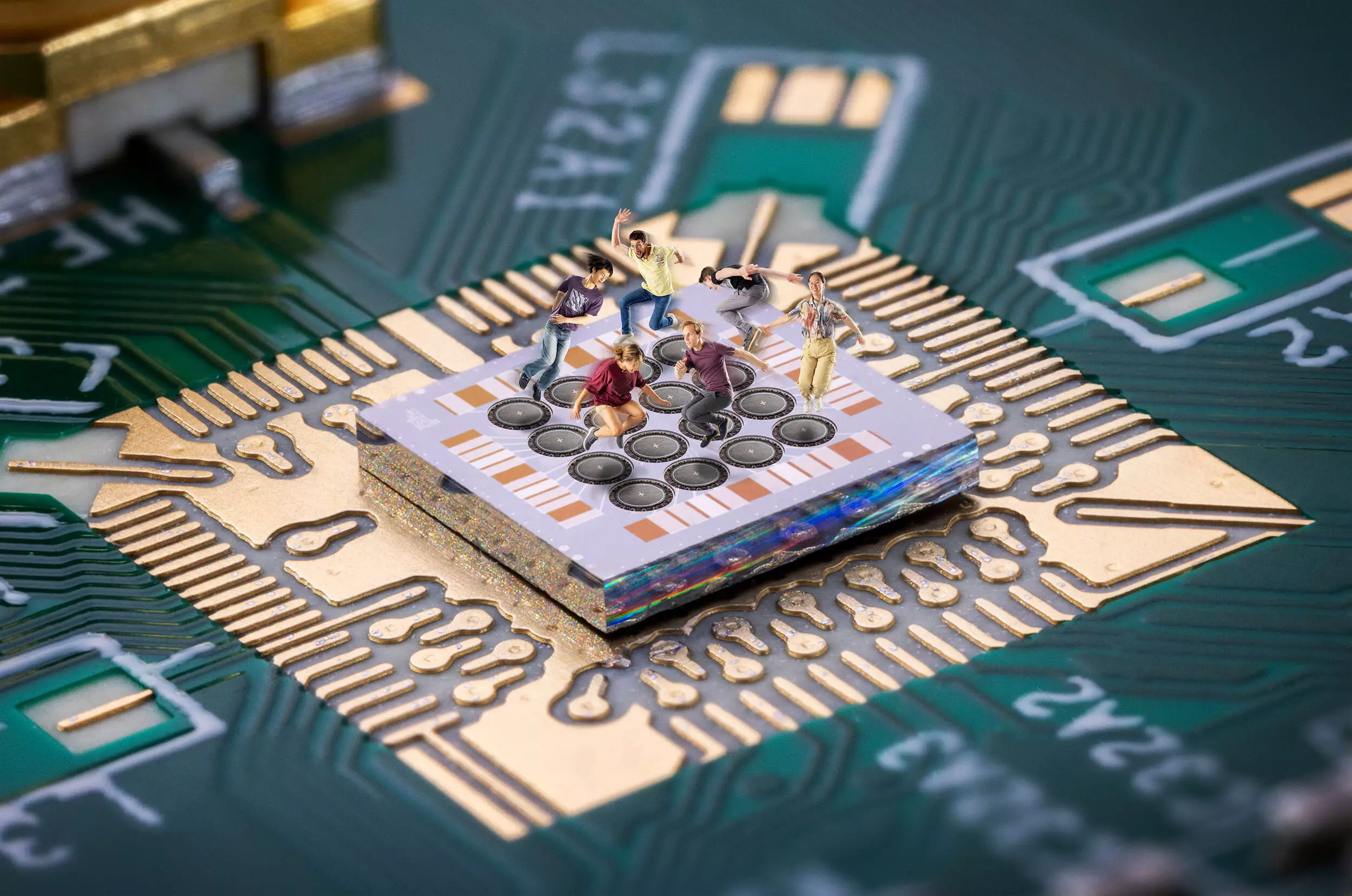In an era where innovations in quantum technology are rapidly reshaping our understanding of computation, the recent advances made at QuTech, an esteemed collaboration between the TU Delft and TNO, herald a pivotal moment. The development of somersaulting spin qubits stands as a remarkable achievement, showcasing the potential for universal quantum logic in ways that promise to streamline and revolutionize the control of semiconductor qubit arrays. This progress isn’t merely an incremental step; it signifies the alignment of experimental capabilities with theoretical predictions that have lingered in the realm of conjecture for over two decades.
In the 1998 paper by Loss and DiVincenzo, titled “Quantum computation with quantum dots,” the foundations for hopping spins as a vehicle for quantum logic were laid out. Yet, experimental validation languished—until now. The QuTech team’s recent publications, demonstrating the possibility of hopping and somersaulting spins, represent a bridge crossed from theory to practical application. This leap is not just significant; it’s virtually tectonic in the quantum computing landscape.
Changing the Control Landscape with Germanium
What sets this research apart is the pivot toward germanium as a semiconductor for qubit functionality. Historically, researchers struggled with specific magnetic control mechanisms proposed by Loss and DiVincenzo, which often fell short in practical application. However, the innovative use of germanium has unlocked new pathways. This material possesses unique attributes that enable the necessary spin rotations without requiring the complex microwave signals previously thought essential.
Imagine a trampoline park, where jumps (representing the electron spins) can transition from one trampoline (quantum dot) to another while gaining spins through somersaults. Here, the qubit array is not just a series of isolated units but a dynamic system where each jump transforms the spin’s orientation, enhancing control in previously unimaginable ways. With researchers asserting that they successfully achieved error rates below a thousand for one-qubit gates and even lower for two-qubit gates, the utility of germanium becomes glaringly evident. It is no longer just a promising candidate but a validated platform for eventual quantum processors.
Visualizing the Dynamics of Hopping and Somersaulting Spins
To grasp the significance of the recent findings, it’s crucial to conceptualize the difference between hopping and somersaulting spins. One can envision the hopping spins as individuals leaping across adjacent trampolines. In contrast, somersaulting spins compel these individuals to not only hop but also perform acrobatic moves mid-air, enhancing the complexity and efficiency of the process significantly.
Chien-An Wang, the lead author of the Science paper detailing these developments, emphasizes the importance of spin alignment across various quantum dots, enhancing qubit quality. The innovative control routines established by the research group allow seamless hopping throughout larger arrays of quantum dots, facilitating sophisticated operations essential for advanced quantum computing. The excitement within the team, notably expressed by principal investigator Menno Veldhorst, encapsulates a sentiment shared throughout the scientific community: this teamwork has catalyzed what might soon become a powerful tool used across the field.
Understanding Variability in Quantum Environments
The variability inherent in quantum systems poses a significant challenge to researchers; however, it is one that the QuTech team is actively overcoming. The nuanced differences in how each quantum dot reacts when spins hop from one to another underscore the requirement for accuracy and variability understanding within larger systems. This research allows qubits to not only perform well in isolation but also to interact and cooperate without detrimental error rates.
As co-author Francesco Borsoi notes, establishing control routines that facilitate smooth transitions between quantum dots into expansive arrays radically expands the potential for probing qubit performance metrics. Achieving this clarity and precision will be incredibly valuable for future advancements in quantum technology.
Sparking Enthusiasm for Future Developments
The implications of this research not only advance theoretical understanding but also invigorate the practicality of quantum computing. By simplifying control mechanisms and enhancing efficiency goals, the advancements made with somersaulting spin qubits could potentially escalate the transition of quantum technology from theoretical frameworks into everyday applications.
As researchers continue to explore the diverse capabilities of quantum dots—particularly in germanium—it becomes increasingly clear that we stand on the brink of transformative technologies that could redefine the computational landscape. This latest work promises that the next decade will be pivotal in guiding quantum computing from experimental laboratories into the commercial realm, where it could one day become an integral part of our technological fabric. The enthusiasm and dedication displayed by the QuTech team illuminate the path forward, making it a truly exciting time in the realm of quantum innovation.


Leave a Reply